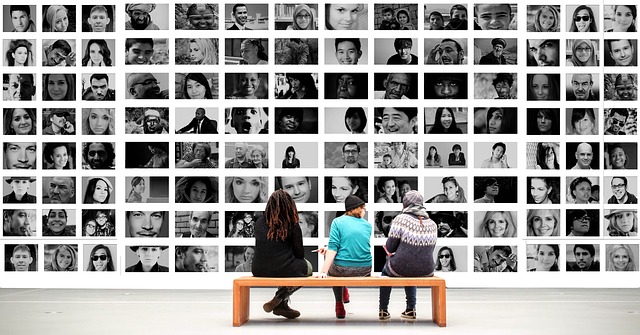
Who is that person in your office? On your bus? On the television?
Many of us are constantly barraged with different faces, and it can be hard to keep track or even to remember some familiar faces at all! Yet, why is this?
In a recent paper in the Proceedings of the Royal Society, a team of researchers sought to analyze whether we create a sort of list or catalogue of faces that we know. In other words, how many faces are we capable of remembering at any given time? While they find an average of about 5000 remembered faces, individual variation seems to play a huge factor in one’s ability to recognize faces.
Importantly, this is not a paper describing what our memory is capable of knowing. Rather, they are trying to determine how many faces people tend to keep in their working memory. Interestingly, most anthropological research finds that humans tend towards small groups of maybe 100 people, but this must be contrasted with the demands of modern society to recognize a multitude of faces every day.
There are, of course, many types of facial recognition, broadly speaking, that complicate this effort. For instance, we may recognize people’s faces whom we have never met or even never seen in person, or we could fail to recognize someone when seen in a novel context. For precision, this paper sought to look at whether facial recognition held up when seeing a familiar face in such novel contexts.
This was evaluated using an experimental design. Participants were exposed to a series of 3441 public figures and asked which they recognized. These were randomly interspersed with slight variations of those same faces an additional 3441 times, so each face was seen twice. This allowed researchers to see if the face was recalled from a previous exposure.
This is only one type of facial recognition, however, as the researchers had to grapple with the multitude of people that we do see every day and know personally. This was looked at by giving participants clear criteria for what constituted a facial memory and asking them to write detailed self-reports of those whom they know personally, including people that they might just happen to see every day on the bus.
When combining recall rates of famous figures with accounts of people known personally, they relied on statistical methods to derive an average estimate of about 5000 people, though this faced incredible individual variance from about one to ten thousand, depending on the participant.
These same individual differences were present during each attempt at a robustness check. This means that researchers subset participants in different fashions and also that they changed recall measures to less stringent cases. For instance, this involved looking not at whether they recognize both famous faces in a pair but if they recognize either picture.
You might very well ask, what exactly does this teach us about facial recognition? One this it does tell us is that people have incredibly different abilities to recognize faces in such contexts. Some people may be very bad at doing so, for instance.
Still, given how intertwined facial recognition is with emotional recognition, this is not about some innate ability to recognize either one. Instead, it can be trained like any other skill, which is exactly what Humintell is here for!
 Finally! The first scientific evidence that microexpressions are a Key to Deception Detection!
Finally! The first scientific evidence that microexpressions are a Key to Deception Detection! Sometimes it is very important to evaluate age based on someone’s face alone, but this can be quite tricky.
Sometimes it is very important to evaluate age based on someone’s face alone, but this can be quite tricky.